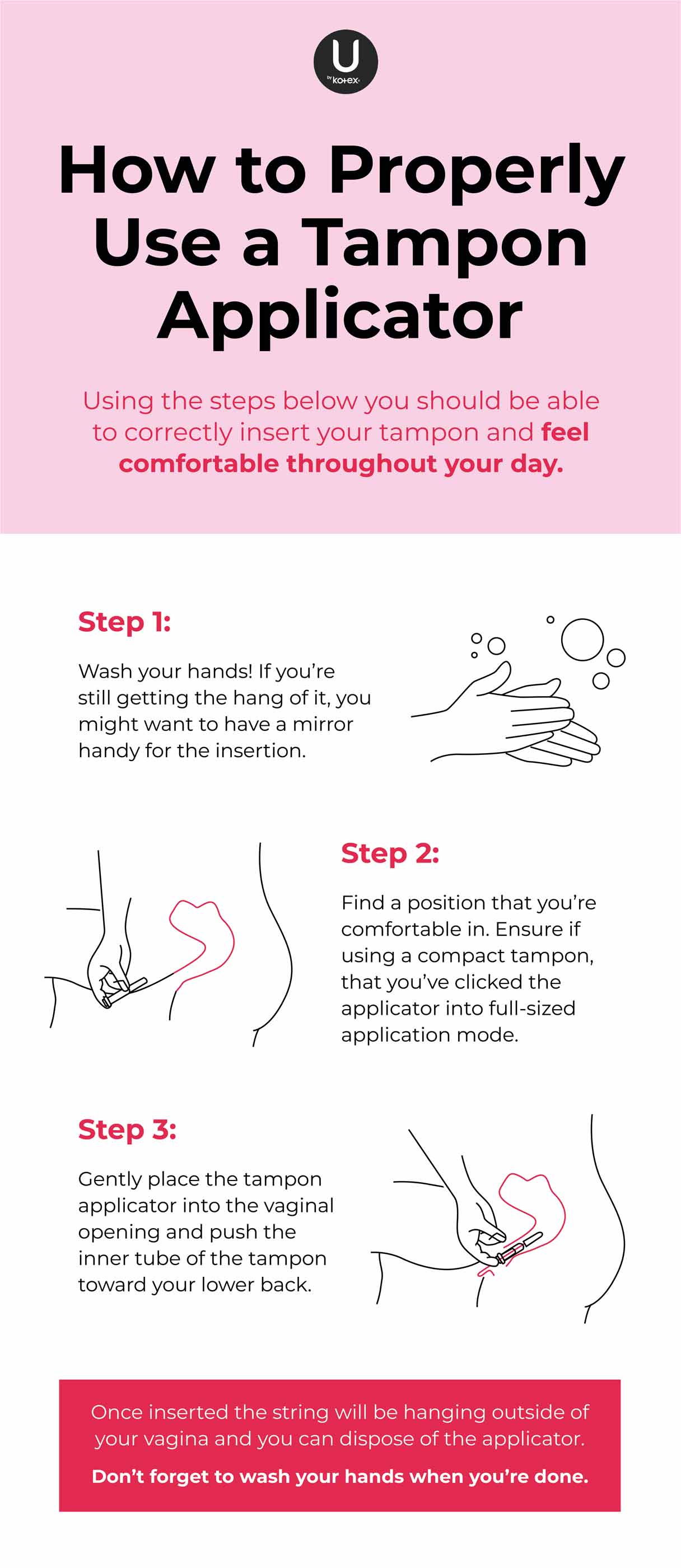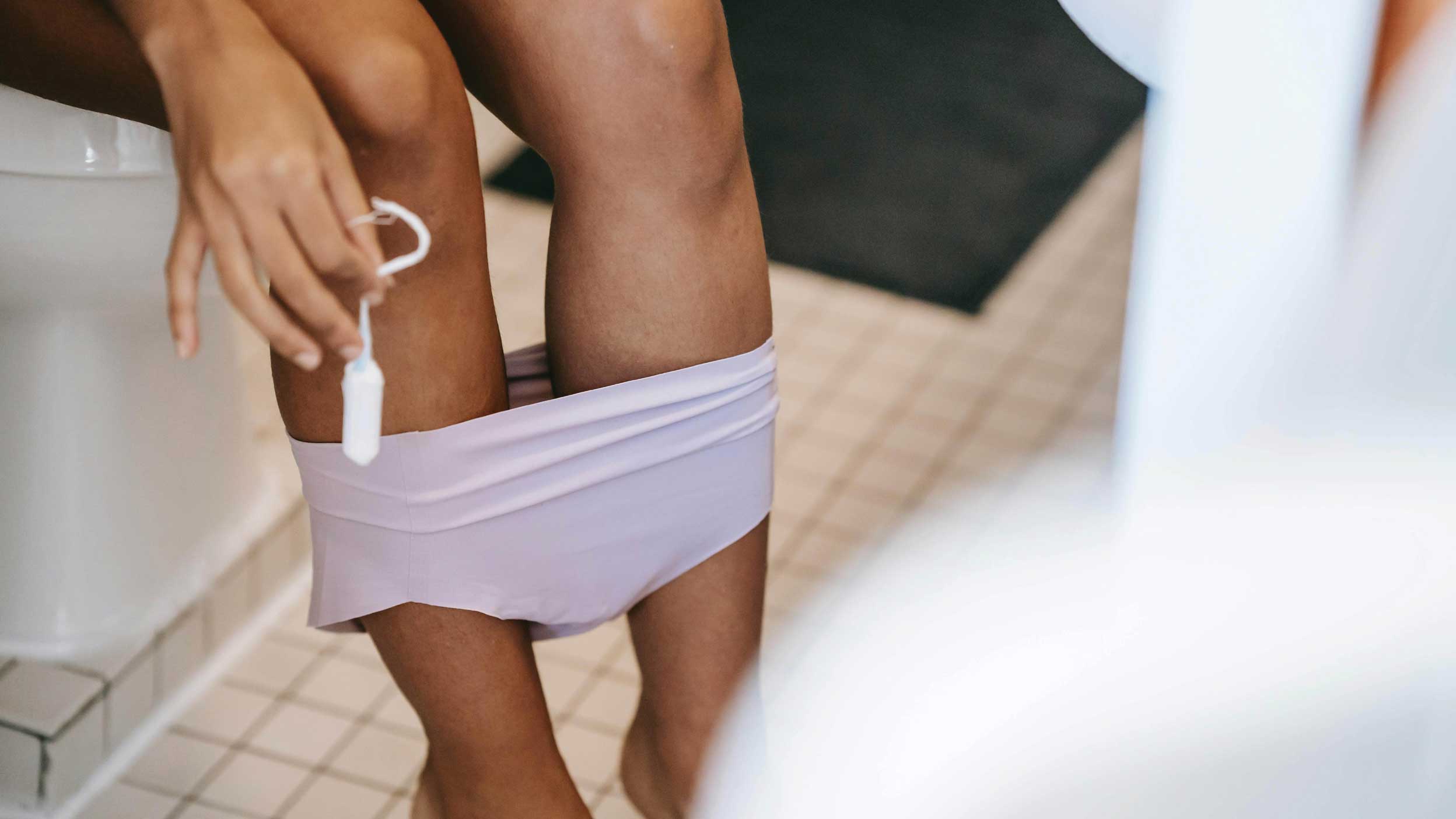How to Use a Tampon
Nervous about using your first tampon? Whether it’s your first time or you simply need some guidance, we’re here to help you avoid uncomfortable and potentially painful experiences with this step-by-step guide. From how to insert a tampon to finding your perfect absorbency, we have you covered for your next menstrual cycle.
What are Tampons?
Before we can get started, it might be a good idea to have a little background information on what tampons are. There’s no doubt that you’ve seen the countless variations of tampons available in the personal care aisle of your drug store but what do they do and how do you find the right one?
Tampons are cylindrical units of soft material designed to absorb your shedding uterine lining during your period. Coming in a variety of absorbencies and sizes, tampons such as the Click® Compact range from U by Kotex® can help you feel protected and confident throughout your day. This line is designed to offer up to 100% leak-free protection with XPRESS-DRI® core.
Choosing the Right Tampon for You
The first step to finding the right tampon for your menstrual cycle is to understand the strength of your flow. This refers to how much you bleed throughout your cycle, which might change as your period progresses and/or as you age. You may find that at the start of your cycle, you bleed less and then progress to a heavier flow or that you start heavy and taper off toward the end of your cycle.
Knowing how heavily you bleed will allow you to choose the best tampon absorbency for your menstrual cycle. If you find that your cycle starts with a flow that is too light for a tampon, you could use a panty liner like the Balance Wrapped Liners by U by Kotex® for lighter (spotting) days of your period before transitioning to a tampon.
Choose the Right Absorbency for You
When it comes to choosing the right tampon for your menstrual flow you want to consider whether your flow is light, moderate, or heavy - with heavier flows needing a stronger absorbency. This flow guide will help you understand which tampon absorbency is best for your cycle to keep you protected throughout the day.
| Flow | Understanding your flow | Best tampons absorbency for your flow |
|---|---|---|
| Light | If you find yourself only needing to change your tampon or pad every three hours, then your flow is referred to as light. | Regular tampons from the Click Compact range from U by Kotex® will help keep you protected with up to 100% leak protection design to keep you comfortable throughout your day. |
| Moderate | If you find yourself soaking more than one tampon or pad with in three hours, then you've got your self a moderate menstrual flow. | Using tampons like the multi-pack of regular & super tampons from the Click Compact collection might be perfect for you. Designed with comfort with protection in mind these portable tampons offer you up to 100% leak-free protection for those days on the go. |
| Heavy | According to the American College of Gynaecologists and Obstetricians, if your period lasts for seven days - or longer - or you find your self needing to change your pad or tampon multiple times an are for several hours, then you have a heavy flow. | For a heavier flow, the Click Compact range as you covered, with products ranging from super to super plus absorbency or a combo pack with tampons from the super, super plus, and regular range. |
How to Insert a Tampon
Now that you’ve found the best absorbency for your menstrual flow you might need guidance on how to insert a tampon and how to avoid any painful or uncomfortable mishaps. Using the steps below you should be able to correctly insert your tampon and feel comfortable throughout your day.

Correct placement of a tampon
Step 1:Wash your hands to prevent any dirt or bacteria from entering your vagina and causing infections. If you’re still getting the hang of it, you might want to have a mirror handy for the insertion.
Step 2:Find a position that you’re comfortable in. It might be with one leg on the toilet seat with your legs bent at an angle facing outward or you might want to sit on the toilet with your legs spread.
BONUS TIP:Before you insert a tampon it’s good to understand which hole you’ll be inserting it into. This is where your mirror comes in handy. To get familiar with your anatomy pre-insertion, locate your vaginal opening, this is an oval-shaped slit that sits between the anus and urethra (where the pee comes out of).
Step 3:If you’re inserting a tampon with an applicator (which might be an easier option for your first time) make sure the string is hanging outside of the applicator. Next, hold the applicator between your thumb and place your index finger at the bottom. Gently place the tip of the tampon applicator into the vaginal opening and push the inner tube of the tampon toward your lower back. Once inserted the string will be hanging outside of your vagina and you can dispose of the applicator.
If you’re using a tampon without an applicator, then unroll the string from its base. Once it’s unwrapped, hold it between your thumb and index finger. When you’re ready, place the tip of the tampon in your vaginal opening and slowly push toward your lower back. You might want to use a mirror for this. Once you’re done the string should be hanging outside of your vagina as this is what you’ll use to remove your tampon.
Step 4: Wash Your Hands and You’re Done
Incorrect Placement of a Tampon
When placing a tampon, the steps mentioned above should have you comfortably covered throughout your day, this way you won’t feel the tampon as you move. If your tampon is incorrectly placed, you’ll likely feel pain or discomfort. This discomfort could also be due to using the incorrect absorbency for your flow as a tampon with a stronger absorbency will be bigger than one with a lower absorbency.
How to Remove Tampons
Depending on your flow, you should be removing your tampon every four to eight hours to avoid any infections or complications. To remove your tampon, sit down on the toilet and gently pull on the string hanging outside of your vagina until it comes out.
Once this is done wrap it in toilet paper or a disposable bag if one is available and dispose of it in the bin or a garbage can specifically for period products if you’re using a public bathroom.
Avoid flushing tampons down the toilet as they can clog up the plumbing system and might cause harm to the environment if they aren’t biodegradable.
What to Consider When Using Tampons
As you start your menstrual journey it’s important to take the time to pick the right tampon. As this is a deeply personal choice, starting from the point of understanding your flow and lifestyle will help you choose the right product designed for your specific absorbency and period care needs.
To find the perfect period product for your cycle, take our quiz to build the best period kit to keep you dry and protected during your menstrual cycle. Make your period a comfortable one.
“This content should not substitute medical advice from your personal healthcare provider. Please consult your healthcare provider for diagnosis or treatment.”


